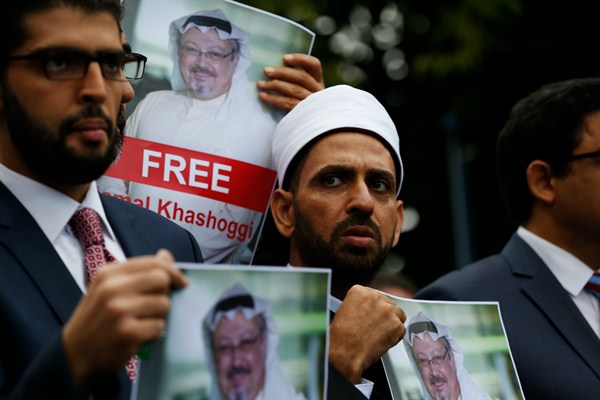The disappearance of the prominent Saudi journalist Jamal Khashoggi has focused much attention in Washington, D.C., where Khashoggi had been living in self-imposed exile, on the stream of bad news coming out of Saudi Arabia in recent months. Ever since Crown Prince Mohammed bin Salman returned from a month-long trip abroad in March and April, with stops in Egypt, the United Kingdom, the United States, France and Spain, a succession of developments have cast serious doubt on the credibility of the reform narrative the crown prince and his entourage were so energetically pushing, to often eager applause.
Given the opaque nature of decision-making at the heart of the Saudi royal family, concrete data points are hard to come by. Yet it increasingly seems that Mohammed bin Salman’s U.S. visit represents, in retrospect, the high-water mark of his domestic and international influence. That leaves gaping questions about the path forward as Saudi Arabia moves inexorably toward a generational transition of leadership and power.
Mohammed bin Salman emerged in 2013 from relative obscurity as a younger son of the then-Crown Prince Salman. He ascended with dizzying speed to chief of his father’s court and then, once Salman became king, to minister of defense and deputy crown prince. With a camera-ready nickname, “MbS” began to concentrate authority in his hands as head of the Cabinet’s Council on Economic and Development Affairs and of a newly formed Supreme Council tasked with overseeing Saudi Aramco, the state-run oil giant. Even before he was named crown prince in June 2017, replacing his older and much-more experienced cousin, Prince Mohammed bin Nayef, Mohammed bin Salman had become the public face of Saudi Arabia. He was associated with all aspects of domestic and regional policy, including the launch of the development agenda known as “Vision 2030” and the projected public sale of 5 percent of Saudi Aramco, as well as the war in neighboring Yemen and the unexpected blockade of Qatar.

